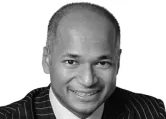Why Asia-Pac banks smile in the face of Basel III Liquidity Ratios
By Moorad ChoudhryBankers everywhere are very familiar, and in one or two cases possibly slightly apprehensive, about the new liquidity and funding requirements that are the new Basel III regime. The acronyms themselves encompass some relatively straightforward arithmetic.
Take Liquidity Coverage Ratio (LCR), it is calculated by dividing a bank’s “High Quality Liquid Assets” by its “30-day stressed outflow cash flows”.
But as with so much in life, everything is relative. Who is to determine what is “liquid”? As for the denominator, just how much of a bank’s customer deposits and wholesale liabilities would depart from the bank if there was some sort of crisis?
(And only depart in the next 30 days…any departures after that aren’t a concern of LCR!). Fortunately for us (no sarcasm intended), the Basel regime describes these relativities for us.
Assets are grouped into Level 1 and Level 2 for liquidity, while different types of liabilities, ranging from a retail customer checking account to short-term money market deposits, are all assigned a “stress factor” that determines the cash outflow amount during a stress event.
There is scope for much interpretation and jiggery-pokery. For this and a number of other reasons, it won’t be accurate to compare one bank’s LCR value with another bank’s, because of the assumptions underlying the calculation (especially the ones driving the denominator).
In Europe the LCR metric is really exercising some people, essentially those in banks who currently calculate LCR to be less than 100% (the limiting value).
Not so in the APAC region. And the reason for this is simple. The culture of banking in the region is subtly but distinctly different.
Within countries as otherwise diverse as Malaysia, Taiwan, Bangladesh and Indonesia, it would be almost unthinkable for banks to run loan-deposit ratios greater than 100%, for them to rely excessively on short-term deposits from wholesale or financial counterparties, or to fund illiquid assets with non-stable liabilities.
In other words, notwithstanding the considerable linguistic, ethnic, cultural and other diversities in the region, if one is to generalise one would say that banking business models are more or less unified, and adhere to a basic principle of banking that was forgotten in many European and US banks during 1999-2007: build up one’s customer deposit base before originating assets.
Partly this is explained by the fact that the experience of 1997, starting in Thailand, had served as a wake-up call to the region’s banks, but this would not be a complete or even a major explanation.
Western banks had encountered recessionary conditions before, but the advance of the economic cycle had served to make lessons learned lessons forgotten. No, the more accurate reason is simply the cultural attitude to doing business, which in the financial industry had always emphasised the major principles of banking.
These principles emphasise stable funding and no excess liquidity risk exposure.
That’s why LCR doesn’t really exercise banks in, for example, Malaysia, Singapore, Bangladesh, Indonesia and others…the list is much longer. When one has a robust funding structure in place already, and always had so, meeting the LCR requirement isn’t an issue at all.
One may as well ask the region’s banks to ensure they run a credit check on a customer before lending it money. That’s the thing about banking: in a bull market, remember that the balance sheet has two sides to it. Unlike the well-known examples of certain Western banks, this was something that APAC banks always did remember.
There’s a lesson there somewhere, certainly.












 Advertise
Advertise










